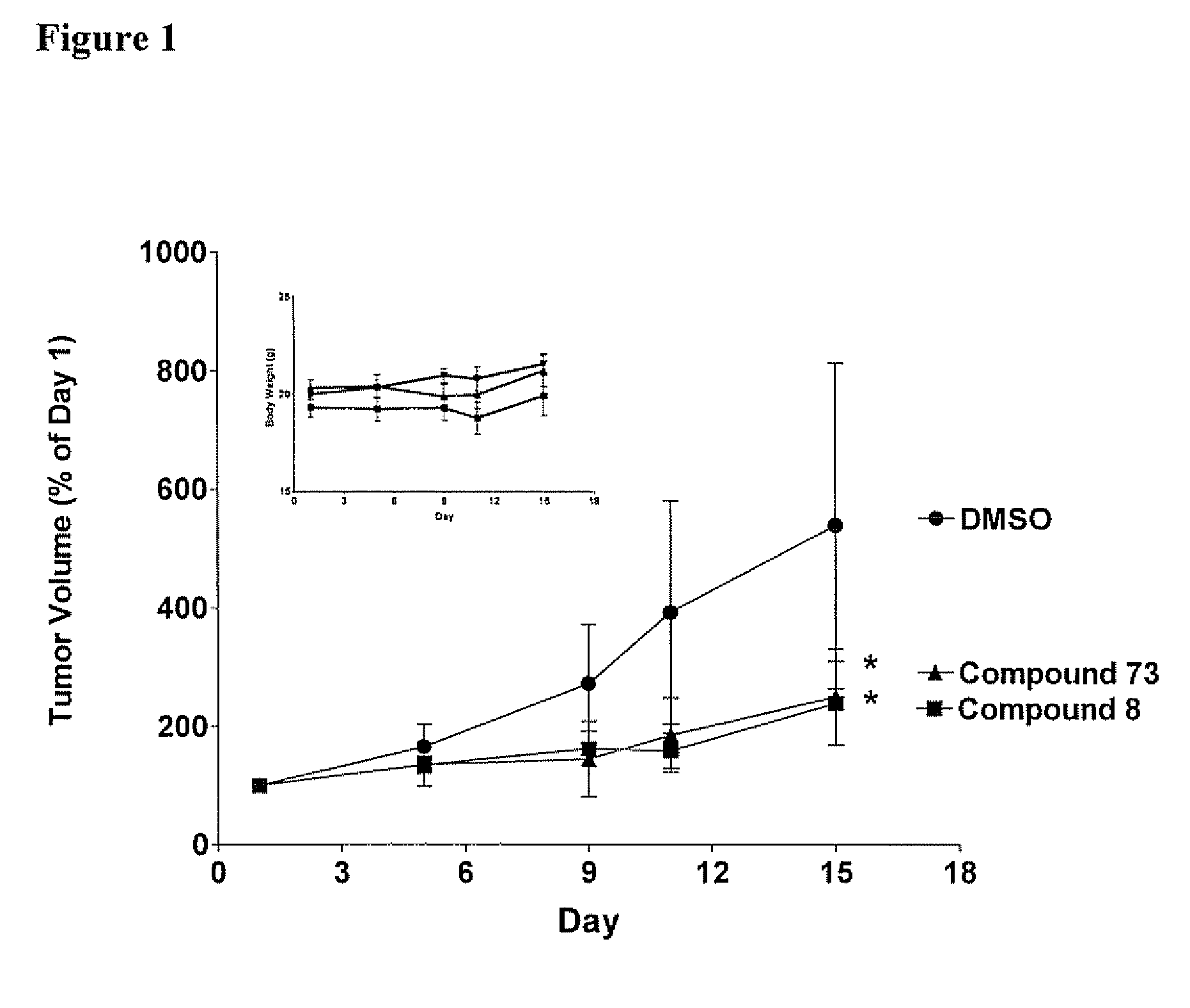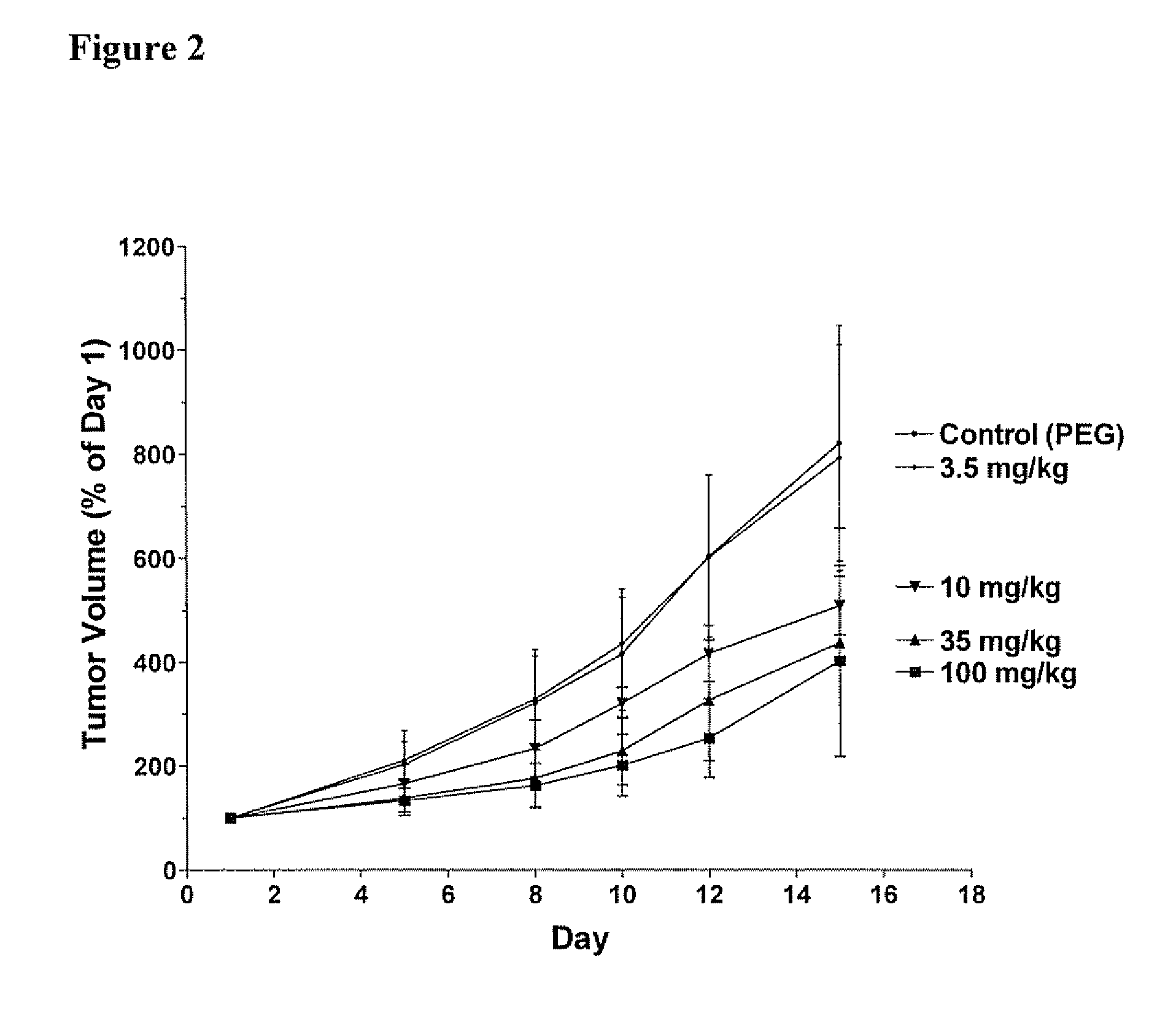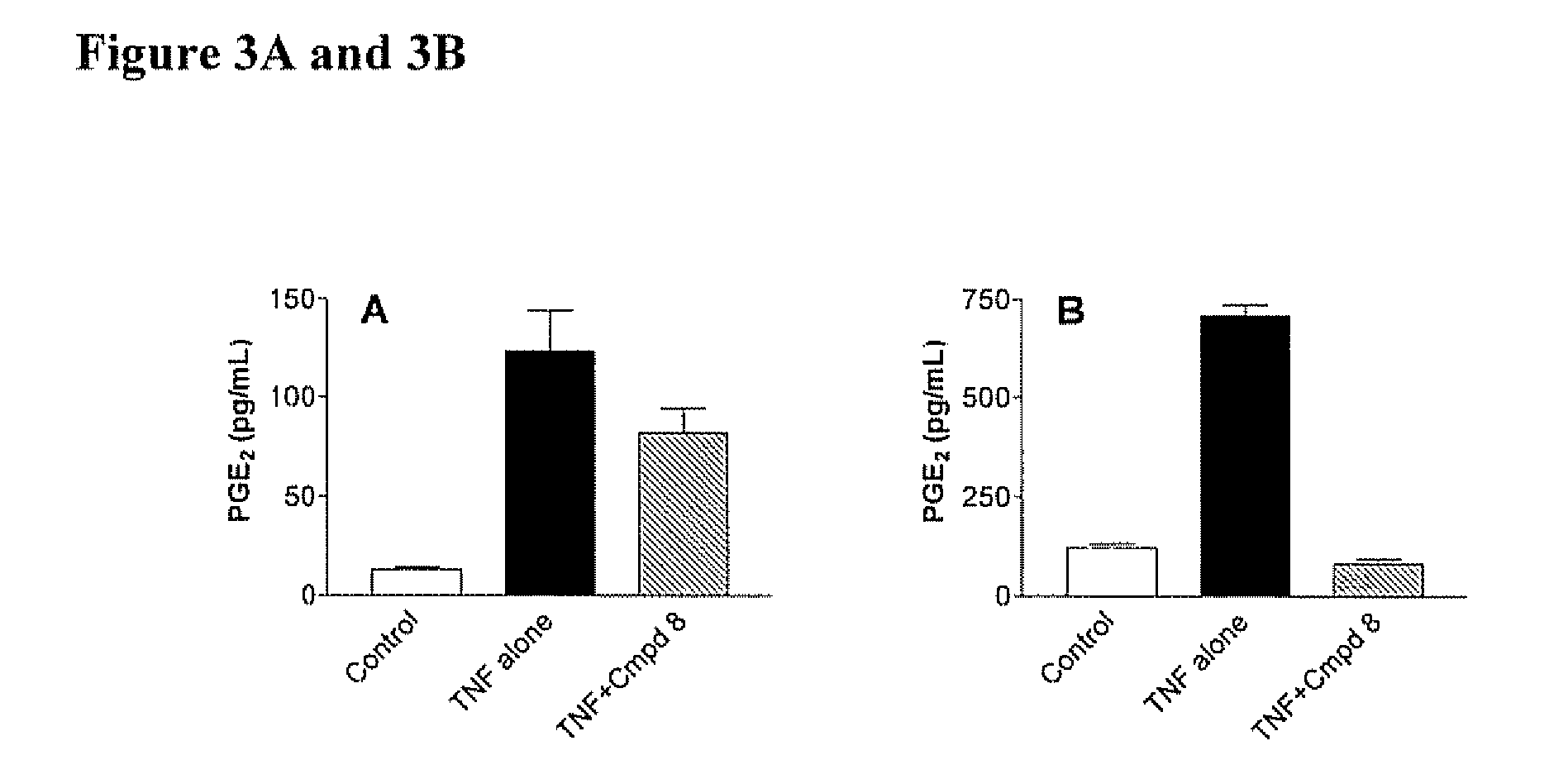Sphingosine kinase inhibitors and methods of their use
a kinase inhibitor and sphingosine technology, applied in the field of sphingosine kinase inhibitors, can solve the problems of inability to effectively inhibit sk, inability to detect and treat sk, and inability to detect sk,
- Summary
- Abstract
- Description
- Claims
- Application Information
AI Technical Summary
Benefits of technology
Problems solved by technology
Method used
Image
Examples
example 2
Synthesis of Phenylthiazoles
[0242] The methods described below were used to prepare a library of substituted phenylthiazoles, biphenyls, benzooxazoles and benzothiazoles. Data provided below include: methods for synthesis, the amount synthesized, the yield of the amidation reaction, mass spectral (MS) data for the compound, and NMR spectral data for the compound.
Compound 2. Tetradecanoic acid [4-(4-chloro-phenyl)-thiazol-2-yl]-amide (B231201)
[0243] Myristoyl chloride (47 mg, 0.19 mmol) was placed in a dried 100 mL round bottom reaction flask by syringe. Anhydrous dioxane (5 mL) was added to it, followed by addition of 2-amino-4-(4-chlorophenyl)thiazol (40 mg, 0.19 mmol) and pyridine (100 uL). The mixture was heated under reflux for 2 h. After cooling to RT and removal of the solvent the residue was dissolved in dichloromethane (50 mL) and washed with water (50 mL). The organic solution was dried over sodium sulfate. After filtration through a pad of silica eluted with chloroform ...
example 3
Assays for Inhibition of Human SK Activity
[0358] An assay for identifying inhibitors of recombinant human SK has been established (French et al., 2003, Cancer Res 63: 5962). cDNA for human SK was subcloned into a pGEX bacterial expression vector, which results in expression of the enzyme as a fusion protein with glutathione-S-transferase, and the fusion protein is then purified on a column of immobilized glutathione. SK activity is measured by incubation of the recombinant SK with [3H sphingosine and 1 mM ATP under defined conditions, followed by extraction of the assay mixture with chloroform : methanol under basic conditions. This results in the partitioning of the unreacted [3H]sphingosine into the organic phase, while newly synthesized [3H]S1P partitions into the aqueous phase. Radioactivity in aliquots of the aqueous phase is then quantified as a measure of [3H]S1P formation. There is a low background level of partitioning of [3 H]sphingosine into the aqueous phase, and additi...
example 4
Inhibition of Human SK by Compounds of this Invention
[0360] Each Compound of this invention was tested for its ability to inhibit recombinant SK using the LC / MS / MS assay described above. Typically, the Compounds were individually dissolved in dimethylsulfoxide and tested at a final concentration of 6 micrograms / ml. The results for the assays are shown in Table 4. The data demonstrate that compounds of Formula I, II, III or IV demonstrate a range of abilities to inhibit the in vitro activity of recombinant SK. Several Compounds caused complete suppression of SK activity at the concentration of 6 micrograms / ml (corresponding to approximately 15 micromolar). As detailed in the Examples below, significant concentrations of the Compounds can be achieved in the blood of mice receiving the Compounds by oral administration, indicating that the Compounds are sufficiently potent to be therapeutically useful.
[0361] Although many of the Compounds inhibited the purified SK enzyme, it was usefu...
PUM
| Property | Measurement | Unit |
|---|---|---|
| Fraction | aaaaa | aaaaa |
| Fraction | aaaaa | aaaaa |
| Angle | aaaaa | aaaaa |
Abstract
Description
Claims
Application Information
 Login to View More
Login to View More - R&D
- Intellectual Property
- Life Sciences
- Materials
- Tech Scout
- Unparalleled Data Quality
- Higher Quality Content
- 60% Fewer Hallucinations
Browse by: Latest US Patents, China's latest patents, Technical Efficacy Thesaurus, Application Domain, Technology Topic, Popular Technical Reports.
© 2025 PatSnap. All rights reserved.Legal|Privacy policy|Modern Slavery Act Transparency Statement|Sitemap|About US| Contact US: help@patsnap.com



